MH17 report: Five key findings from the Dutch Safety Board
- Published
An animated video from the Dutch Safety Board shows the damage to the plane and how it was caused
1. Brought down by a warhead
Malaysia Airlines flight MH17 was brought down by a warhead that detonated outside and above the left-hand side of the cockpit, causing structural damage to the forward part of the aeroplane. This is based on a sound peak recorded by the Cockpit Voice Recorder, located to the position outside the plane, and the pattern of damage observed on the forward fuselage. The detonation caused an in-flight break up that saw the forward part fall 2.3km from the last position recorded on the flight data recorder while the back part of the plane continued in the air for 8.5km before breaking up further.
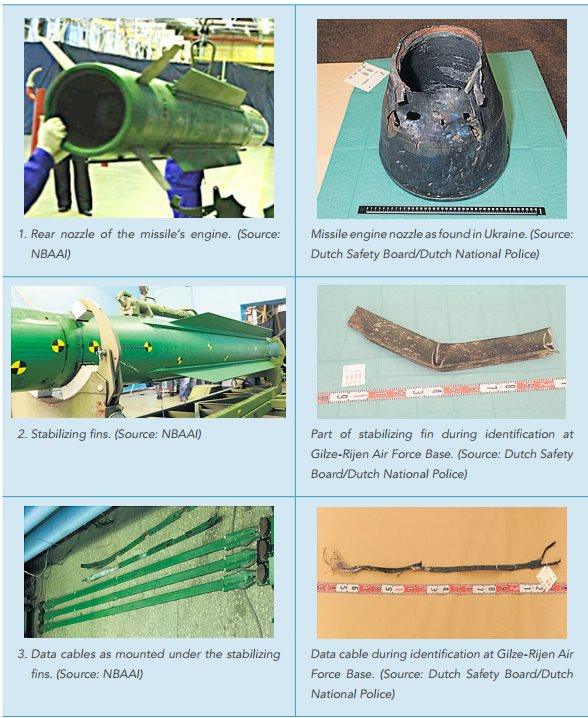
The Dutch Safety Board said a Buk missile system was used
2. Buk missile system used
The warhead was carried on a class of missile installed on the Russian-made Buk surface-to-air missile system. The conclusion is based on the damage pattern found on the wreckage caused by the blast and the impact of fragments, analysis of the explosive residues and the distinctive "bow-tie" shape of some of the fragments. The number of perforations in the fuselage is not consistent with air-to-air gunfire and none of the air-to-air missiles in use in the region have the distinctively shaped fragments.

Warhead discrepancy
In the report, the Dutch Safety Board says the weapon used was a 9N314M-model warhead carried on the 9M38M1 missile, as installed on the Buk surface-to-air missile system.
It adds that the type of fragments found in the wreckage and bodies of crew members in the cockpit were bow-tie or cube shaped - only found in the 9N314M warhead.
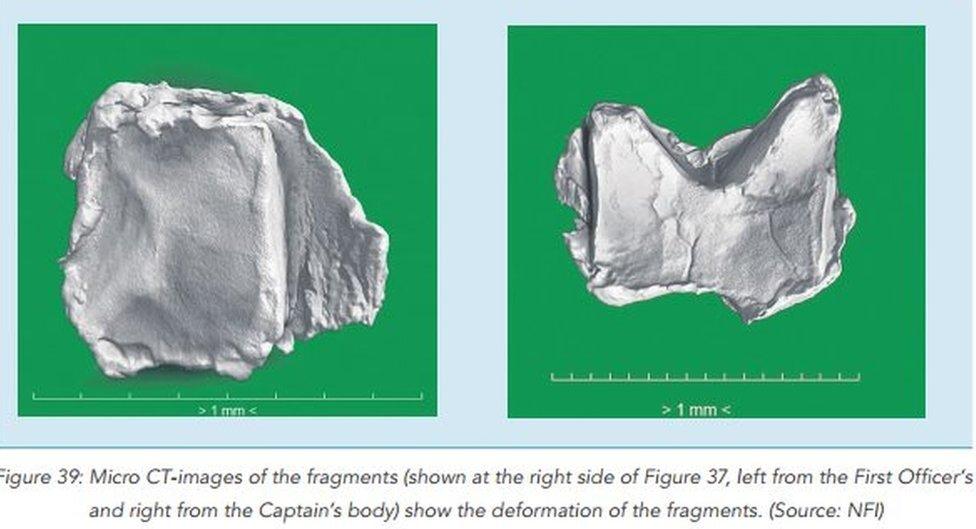
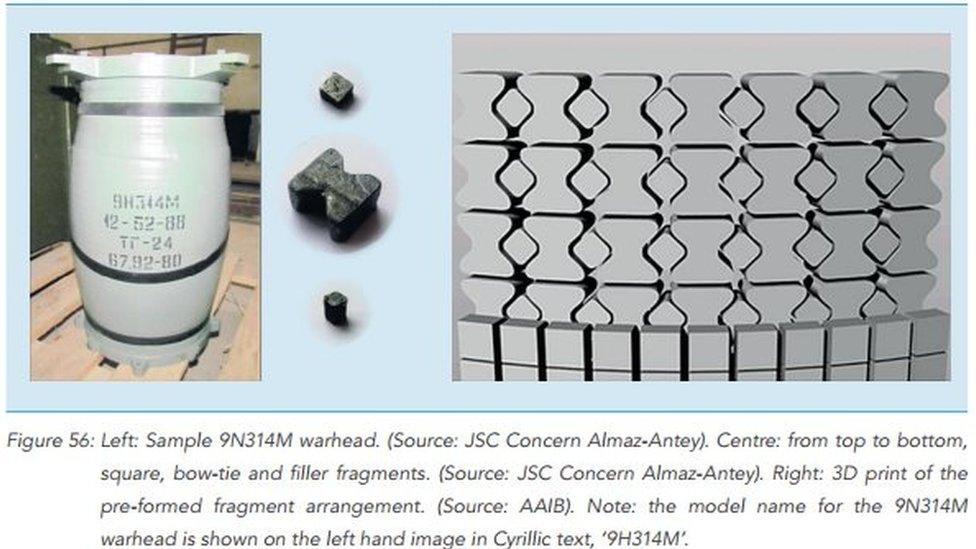
However, the Russian side disputed the Dutch findings insisting that only older warheads and missiles of the 9M38 type still in the hands of the Ukrainian army could have been used as they were the only weapons with "butterfly or bow-tie" fragments. The Russian army had phased them out.
"The 9M38M1 missile has no H-shaped striking elements," Yan Novikov, the head of Buk missile company Almaz-Antey said.
In their submission to the Dutch report, the Russian experts argue that investigators should not have discounted other potential reasons for plane's destruction, such as an air-to-air rocket. This is completely rejected by the Dutch Safety Board.

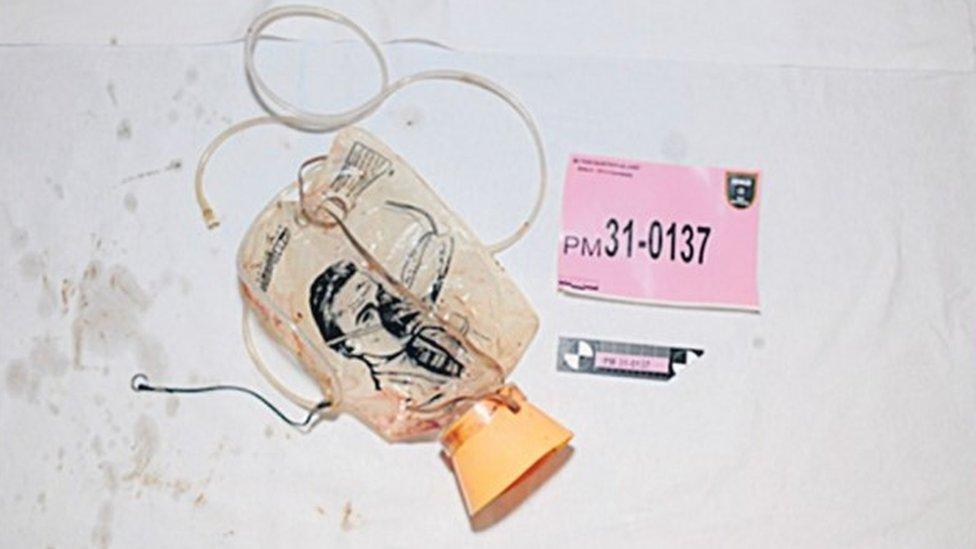
The report said it was unclear how one passenger came to be found wearing an oxygen mask
3. Passengers barely aware of attack
The explosion was immediately fatal only to the three people in the cockpit. The report says, external: "It cannot be ruled out that some occupants remained conscious for some time during the one to one-and-a-half minutes for which the crash lasted" but adds that investigators "did not find any evidence of conscious actions performed by the occupants after the missile's detonation" and says those on board were "barely able to comprehend the situation in which they found themselves". One passenger was found wearing an oxygen mask, but it was "unclear how the mask got there", the board said.
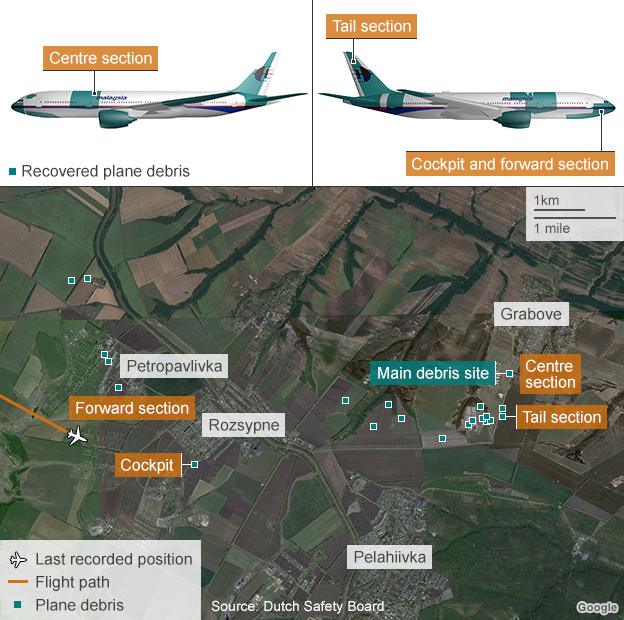
Parts of the plane were found 8km (5 miles) from the main debris site
4. Wide possible launch area
Calculations show that the missile was launched somewhere in an area of 320 sq km in eastern Ukraine, although additional investigations - which fall outside the Dutch Safety Board's remit - are needed to confirm the launch location.
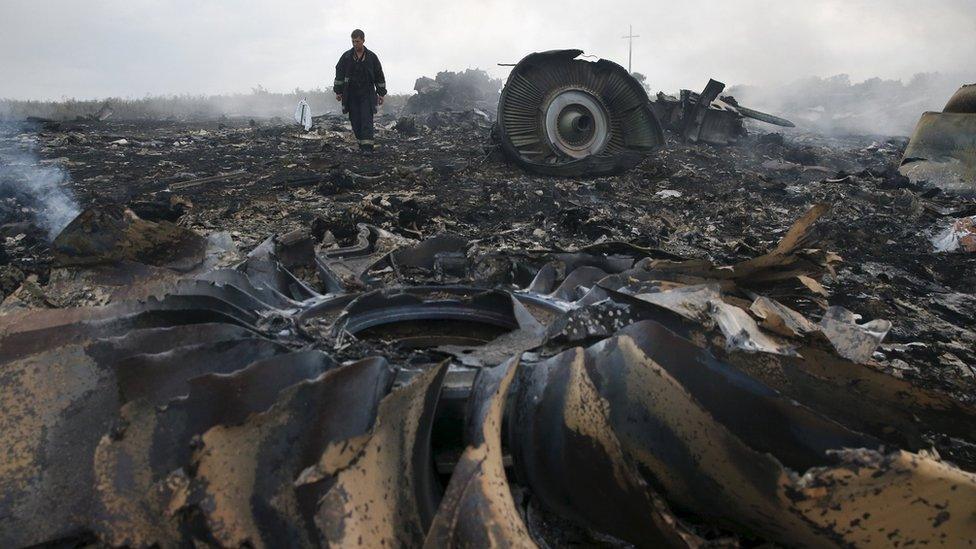
The Dutch Safety Board found 16 military aircraft had been brought down in eastern Ukraine in the weeks before the MH17 disaster
5. Inadequate risk assessment
Ukraine should have closed its airspace to commercial traffic, while Malaysia Airlines and third party bodies such as the International Civil Aviation Organization did not adequately consider the risks involved in flying over an area of conflict. The report found that about 16 military planes and helicopters had been shot down in eastern Ukraine in the weeks before flight MH17 was downed. On the day of the crash, 160 flights flew over the area in question. The report concludes that the current system for safeguarding civil aviation is insufficient to adequately assess the risks associated with flying over conflict areas.